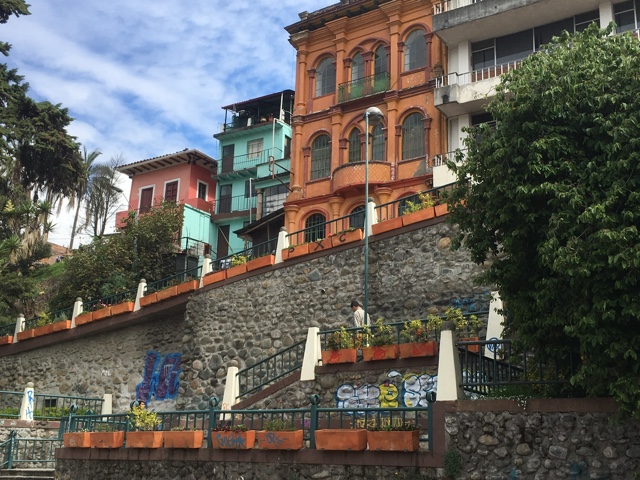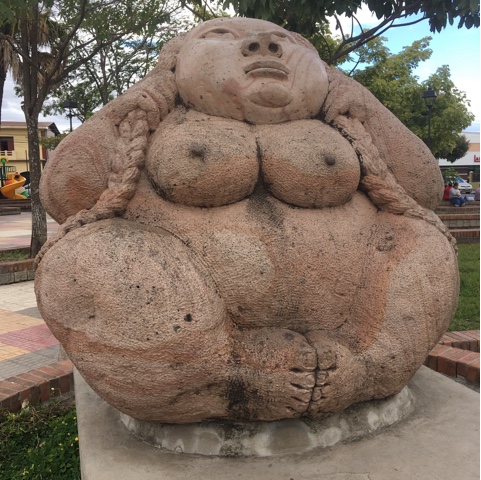Cuenca, Ecuador via walkabout
Cuenca is a land of perpetual springtime. Situated in a valley between the two spines of the Andes Mountains, the city is perched at 8,300 feet above sea-level. The urban area has a population of about 500,000. Folks have been living here for a very long time. The first inhabitants were nomadic hunters. The Canari people settled in the valley, forming a civilization that lasted until about 1470, when the Canari were conquered by the powerful Inca empire. The Spanish Conquistidores arrived here around 1550, defeating the Inca and establishing Spanish colonial rule. Cuenca achieved independence from Spain on November 3rd, 1820.
Rio Tomebamba
Cuenca gets its name from the Spanish word for a joining of rivers. Four main rivers converge in the Cuenca basin. Senor Hansen, my host, lives on the Tomebamba. The frequent heavy rains in the Caja, the mountains above the city, can turn the Tomebamba into a raging torrent in a matter of minutes.
The Puente Roto, or Broken Bridge. The old bridge did not survive one of the flood events on the Tomebamba.
Today, the historic center of Cuenca is a UNESCO World Heritage Site. The more modern portions of town lie outside the Heritage Site boundaries. The city is popular with Ex-Pats, mostly from the USA. The mild climate, reasonable healthcare, and Ecuador's lenient attitude towards Gringo retirees, contribute to the flow of Ex-Pats. There are between three and four thousand of them here, although estimates vary. As a result, there are numerous restaraunts and businesses that cater to the Ex-Pats.
Cuenca is a great city for Walkabout. Stray just a bit off the diesel choked main routes, and one will find peaceful walking on narrow flagstoned streets.
There are long walks along the Rio Tomebamba, with the historic center of Cuenca rising on the east side.
The flower market in one of the many plazas of the city.
If you want to get your shopping fix, the many market stalls have you covered. For serious food shopping, the Mercado, the enormous covered market, has hundreds of stalls selling local food and produce. If a traveler needs fifty different kinds of potatoes, the Mercado is the place to be.
And, of course, there is a Cathedral on the main plaza.
The central plaza, complete with statues of The Dead Heroes.
Cuenca Graffitti
This is the base of operations for the rest of this sojourn. In truth, I am being lazy, enjoying the luxury of warm hospitality, a great host, and a room of my own. I sit on the balcony and watch the Tomebamba. I try to coax the hummingbirds to eat out of my hand. I go walkabout. I enjoy feeling like a younger man simply by comparison with the average age of the Ex-Pats. Life is slow and easy. I'm okay with that.
So, from Cuenca, Ecuador, it is time to say "Ciao for Now!"

















































